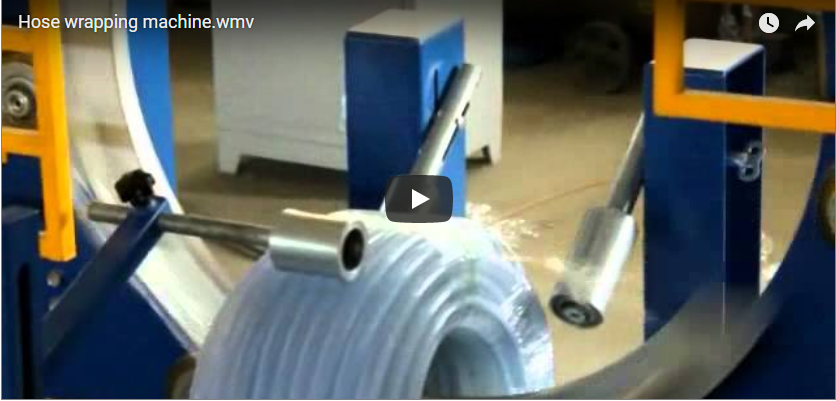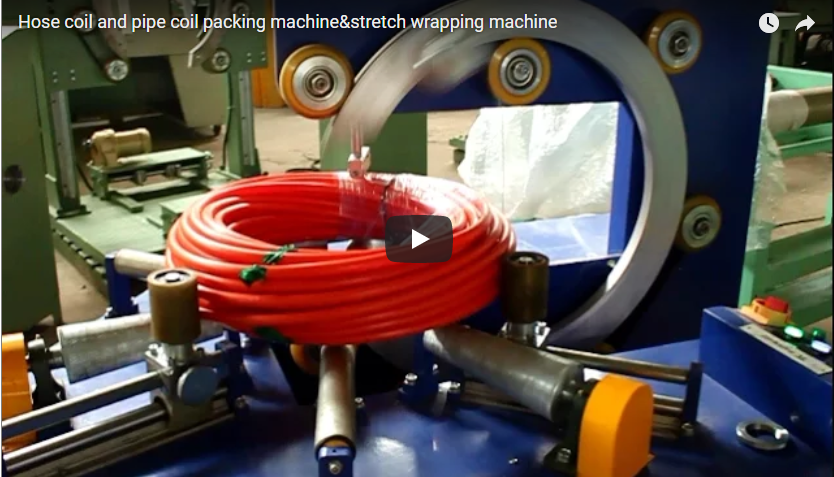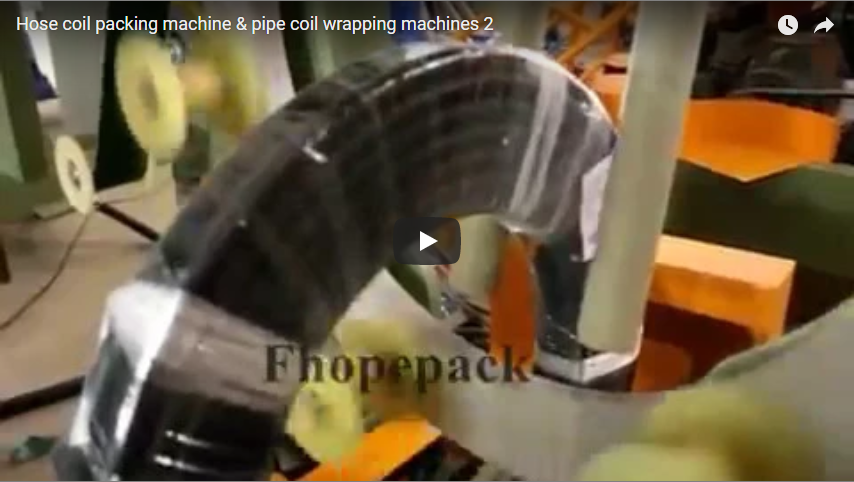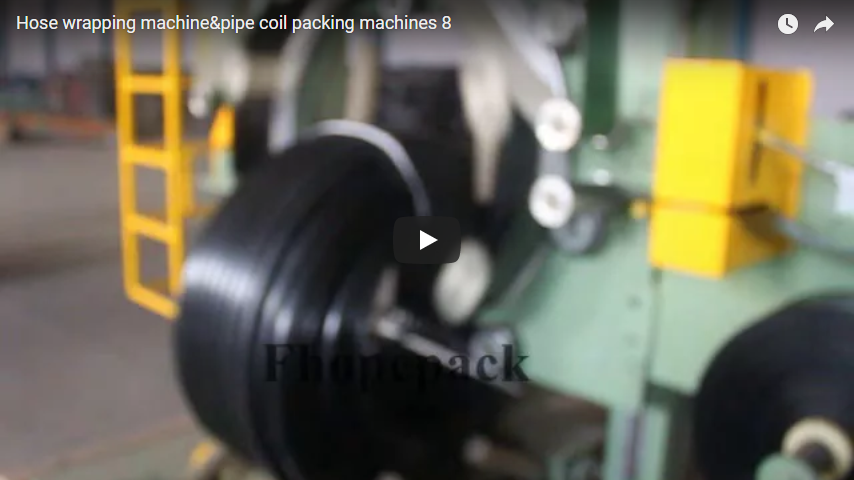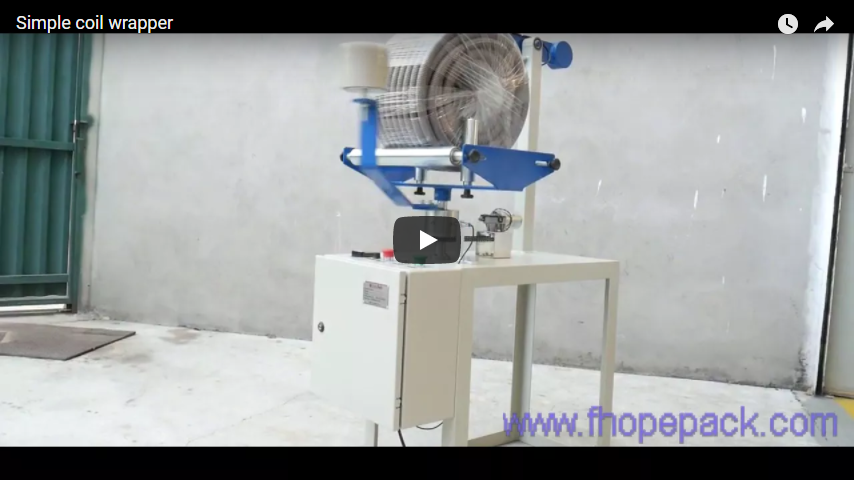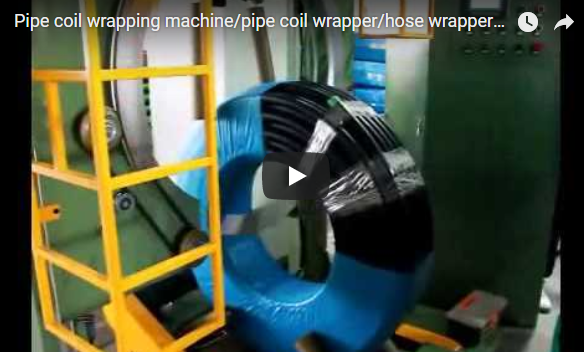Optimizing Hose and Pipe Coil Packaging: An In-Depth Look at Automated Wrapping Machines
Packaging large, cumbersome coils of materials like hoses, pipes, wires, and cables presents unique challenges in manufacturing and distribution. Manual packaging is often slow, labor-intensive, and can result in inconsistent wrap quality, potentially leading to product damage during transit. Automated coil wrapping machines offer a robust solution, enhancing both efficiency and package integrity. This guide explores the technology, operation, and benefits of these essential industrial machines.
Video demonstrating the operation of an automated coil wrapping machine.
1. Understanding Coil Wrapping Technology
Automated coil wrapping machines typically employ an orbital wrapping technique. The coil remains relatively stationary while a wrapping head, carrying the packaging material (like stretch film or paper), revolves around and through the center eye of the coil. This method ensures complete encapsulation of the product, providing stability and protection.
2. Key Components and Operational Cycle
While designs vary, most hose and pipe coil wrappers share fundamental components:
- Infeed/Outfeed Conveyors: Transport coils into and out of the wrapping station. These can be roller or belt conveyors, often integrated with automated loading/unloading systems.
- Wrapping Ring/Shuttle: The core component that orbits the coil, carrying the film roll and applying the packaging material.
- Film Delivery System: Controls the dispensing and stretching of the packaging film. Pre-stretch mechanisms are common, elongating the film before application to maximize yield and secure the load effectively.
- Clamping and Cutting Unit: Automatically grips the leading edge of the film at the start of the cycle and cuts it upon completion.
- Control System (PLC/HMI): Programmable Logic Controller (PLC) manages the machine's sequence and functions, often operated via a Human-Machine Interface (HMI) for parameter adjustments (wrap counts, tension, speed) and diagnostics.
- Safety Features: Light curtains, safety interlocks, and guarding are crucial for operator protection.
Typical Operational Sequence:
- Loading: The coil is placed onto the infeed conveyor or directly into the wrapping position.
- Positioning: Sensors detect the coil's presence and position it correctly within the wrapping ring's path.
- Wrapping: The wrapping ring begins orbiting, applying the film according to pre-set parameters (e.g., number of wraps, overlap percentage, tension).
- Cutting & Sealing: Once wrapping is complete, the film is automatically clamped, cut, and often sealed (e.g., via heat or a wipe-down mechanism).
- Unloading: The wrapped coil is transported out via the outfeed conveyor.
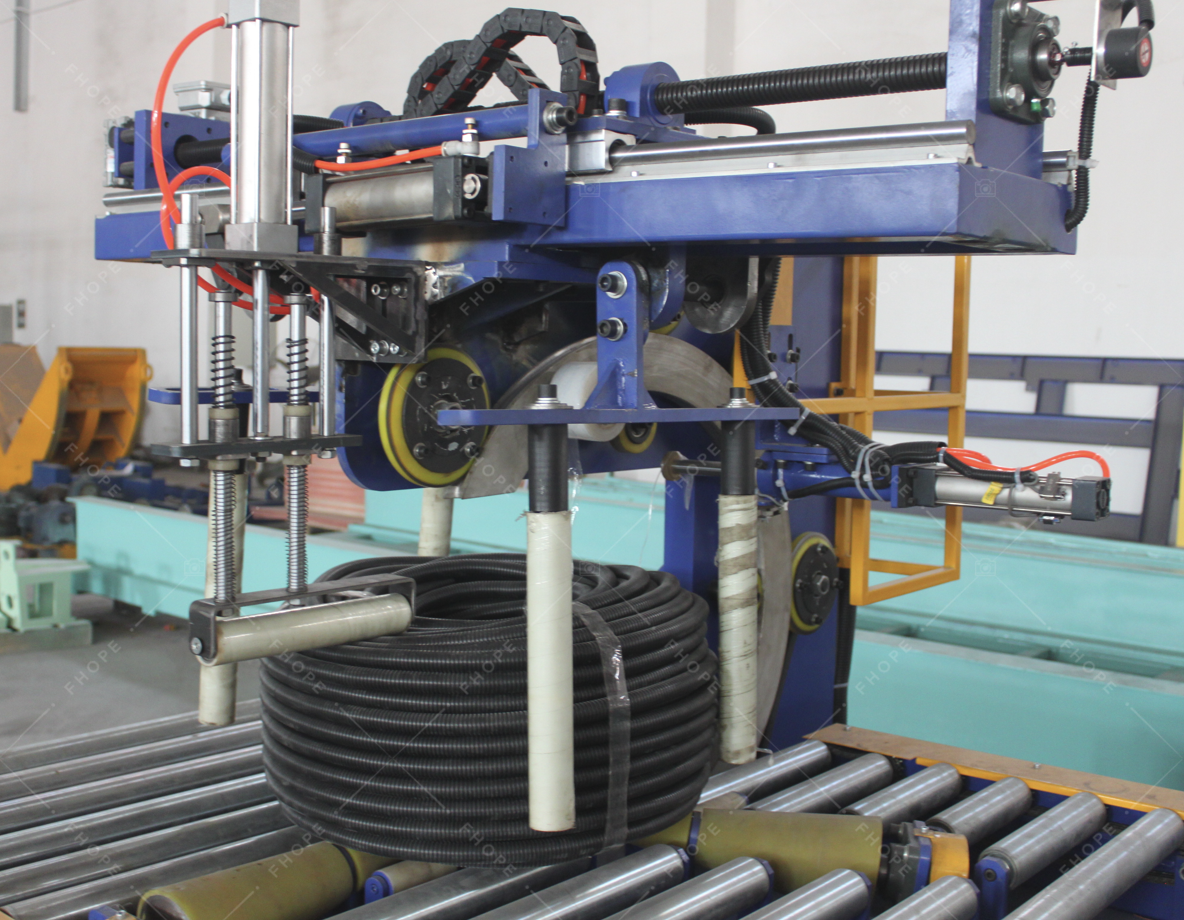
3. Performance Metrics and Specifications
When evaluating or specifying a coil wrapping machine, key technical parameters include:
- Coil Dimensions:
- Maximum/Minimum Outer Diameter (OD)
- Maximum/Minimum Inner Diameter (ID)
- Maximum/Minimum Width/Height
- Maximum Weight Capacity
- Wrapping Speed: Often measured in coils per hour or seconds per coil (e.g., cycle times potentially as low as 15-25 seconds for smaller coils, depending on wrap requirements).
- Ring Rotation Speed: Measured in RPM, directly impacting throughput.
- Packaging Materials: Compatibility with various films and materials:
- Linear Low-Density Polyethylene (LLDPE) Stretch Film
- Polyethylene (PE) Film
- High-Density Polyethylene (HDPE) Woven Fabric
- Kraft Paper
- VCI (Volatile Corrosion Inhibitor) Film/Paper for metal products
- Film Tension Control: Adjustable settings to ensure optimal load containment without damaging the product.
- Power Requirements: Voltage, phase, and power consumption.
- Air Requirements: Pressure and consumption if pneumatics are used.
4. Advantages of Automation in Coil Wrapping
Implementing automated coil wrapping systems yields significant operational benefits:
- Increased Throughput: Machines operate consistently and faster than manual methods, boosting overall packaging line efficiency.
- Improved Package Quality: Consistent tension control and precise overlap result in secure, uniform wraps that protect products effectively.
- Reduced Material Consumption: Film pre-stretch capabilities can significantly lower the amount of packaging material used per coil compared to manual wrapping.
- Labor Savings: Automation frees up personnel from repetitive, physically demanding tasks, allowing them to focus on higher-value activities.
- Enhanced Safety: Reduces manual handling of heavy or awkward coils and eliminates ergonomic risks associated with manual wrapping.
- Product Protection: Provides robust protection against dust, moisture, abrasion, and tampering during storage and shipping.
5. Material Selection Considerations
The choice of packaging material depends on the product and protection requirements:
- LLDPE Stretch Film: Most common; offers good load containment, puncture resistance, and clarity. Available in various thicknesses (gauges).
- PE Film: Can provide barrier properties; often used where stretch isn't the primary need.
- HDPE Woven: Offers high strength and puncture resistance, suitable for heavy or abrasive products.
- Paper: Provides a breathable wrap, sometimes preferred for specific materials or for aesthetic reasons. Can be laminated or coated for moisture resistance.
6. Selecting the Appropriate Machine
Consider these factors when choosing a coil wrapping solution:
- Product Characteristics: Size, weight, shape, and fragility of the coils.
- Throughput Needs: Required packaging speed (coils per hour/shift).
- Level of Automation: Standalone machine versus fully integrated line with automated loading/unloading and labeling.
- Material Flexibility: Need to handle multiple coil sizes or packaging materials.
- Operating Environment: Space constraints, temperature, and cleanliness.
- Budget: Initial investment versus long-term operational savings.
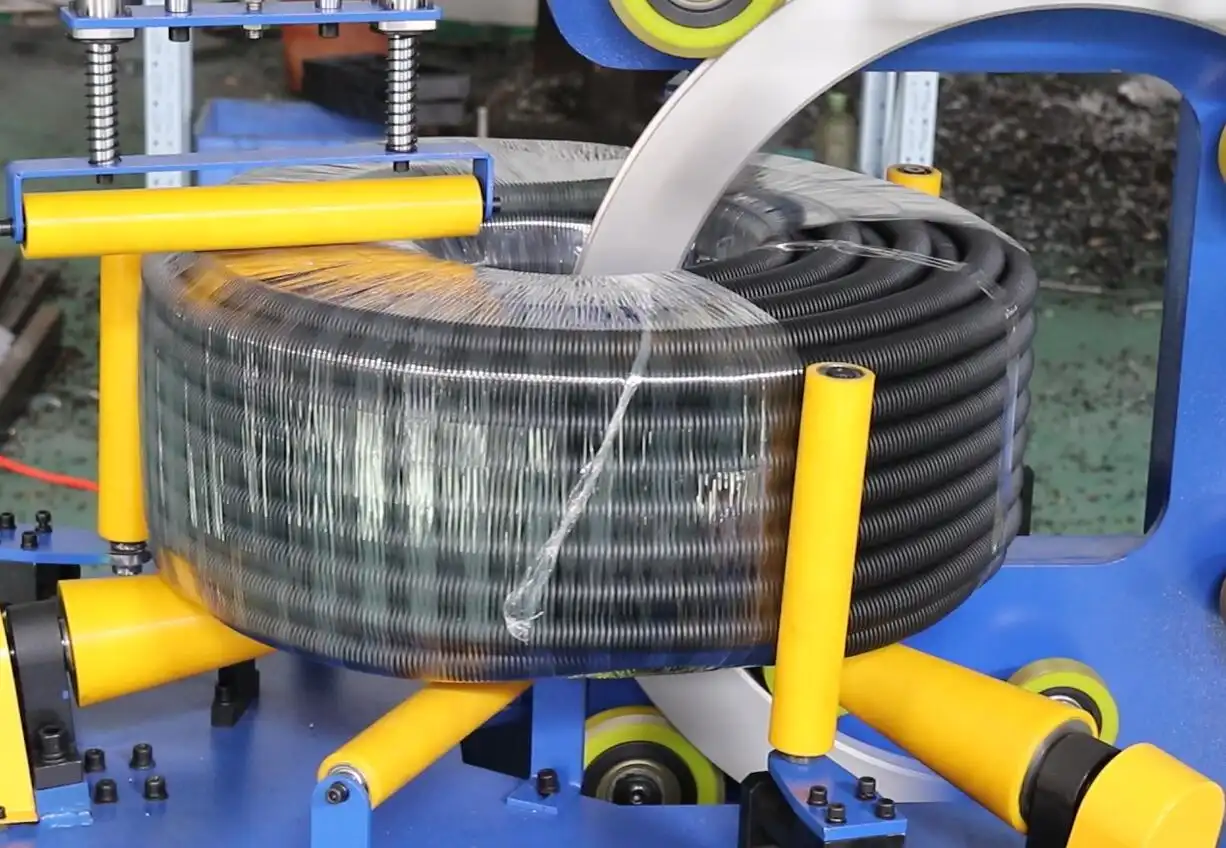
7. Conclusion
Automated hose and pipe coil wrapping machines are indispensable assets in industries requiring efficient and reliable packaging of coiled products. By understanding the underlying technology, operational parameters, and available features, engineers and operations managers can select and implement systems that significantly enhance productivity, reduce costs, and ensure products reach their destination securely and undamaged. Careful consideration of specific application requirements, including coil dimensions, desired speed, and material compatibility, is key to maximizing the return on investment.
For examples of specific machine capabilities, you can explore resources like:
https://www.fhopepack.com/Hose-packaging-machine/

